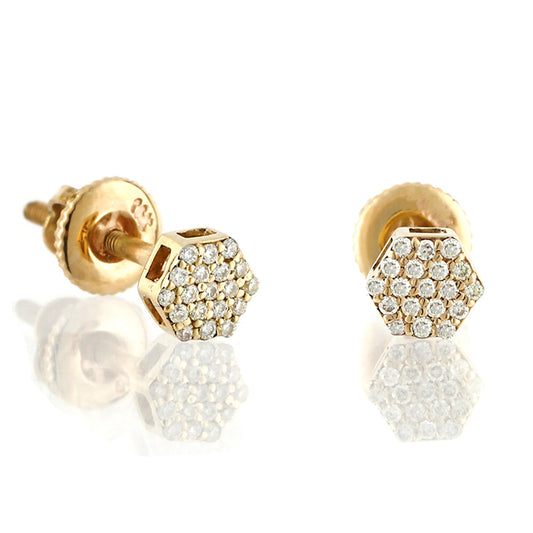Buying diamond jewelry is a significant investment, often marking special occasions such as engagements, anniversaries, or personal milestones. With various options available, it can be overwhelming to navigate the process. This comprehensive guide will help you understand the essential factors to consider when purchasing diamond jewelry, ensuring you make an informed decision that fits your style and budget.
1. Understand the Four Cs
The quality and value of diamonds are primarily determined by the Four Cs: Cut, Color, Clarity, and Carat weight. Familiarizing yourself with these characteristics is crucial for making a wise purchase.
-
Cut: This refers to how well the diamond has been shaped and faceted. A well-cut diamond will reflect light beautifully, enhancing its brilliance. The cut is often considered the most important of the Four Cs.
-
Color: Diamonds range from colorless (D) to light yellow or brown (Z). Generally, diamonds in the G-H range offer a good balance of quality and affordability while appearing nearly colorless.
-
Clarity: This measures the presence of internal or external flaws. For most jewelry purposes, diamonds graded as SI1 (Slightly Included) or VS2 (Very Slightly Included) provide excellent quality without being overly expensive.
- Carat Weight: This indicates the size of the diamond. While larger diamonds are more expensive, consider what size feels right for you and fits within your budget.
2. Set a Budget
Before you start shopping, establish a clear budget. While traditional advice suggests spending two to three months' salary on an engagement ring, it’s essential to choose an amount that feels comfortable for you. Remember that diamonds can vary significantly in price based on their characteristics, so having a budget will help you narrow down your options.
3. Choose the Right Style
The style of diamond jewelry you choose should reflect your personal taste or that of the person receiving it. Consider different types of jewelry such as:
-
Engagement Rings: Typically feature a prominent diamond and can come in various settings.
-
Necklaces: Ranging from simple pendants to elaborate designs featuring multiple stones.
-
Earrings: Studs are classic, while hoops or drop earrings can add flair.
Understanding your or your partner's style will help guide your selection.
4. Select the Metal
The metal used in diamond jewelry can significantly impact its overall appearance and durability. Common choices include:
- White Gold: Offers a modern look and complements diamonds well.
- Yellow Gold: Provides a classic and warm appearance.
- Rose Gold: Adds a trendy touch with its pink hue.
-
Platinum: Known for its durability and hypoallergenic properties, platinum is a premium choice.
Consider which metal aligns best with personal preferences and skin tone.
5. Work with Reputable Jewelers
When purchasing diamond jewelry, it’s crucial to work with reputable jewelers who provide certified diamonds. Look for jewelers who offer grading reports from recognized organizations like the GIA (Gemological Institute of America). These reports ensure that you are getting an unbiased evaluation of the diamond's quality.
6. Consider Customization
If you're looking for something unique, consider customizing your diamond jewelry. Many jewelers offer custom designs where you can select both the diamond and setting according to your specifications. This option allows you to create a one-of-a-kind piece that reflects personal style and sentiment.
7. Verify Certification
Always ask for certification when purchasing a diamond. A reputable jeweler should provide documentation that details the quality characteristics of the stone based on recognized grading standards. This certification gives you peace of mind regarding your purchase.
8. Don’t Forget About Insurance
Once you've purchased your diamond jewelry, consider insuring it. Jewelry insurance protects against loss, theft, or damage, providing peace of mind as you enjoy your new piece. Check if your homeowner's or renter's insurance covers jewelry; if not, look into specialized jewelry insurance policies.
9. Understand Resale Value
While buying diamond jewelry is often about personal enjoyment, understanding its resale value can be important too. Most jewelers offer around 90% of the prevailing price for resale or exchange. Knowing this can help you make informed decisions about future purchases or upgrades.
10. Take Your Time
Finally, don’t rush into buying diamond jewelry. This decision is significant and deserves careful consideration. Explore various styles and options until you find something that resonates with you or your partner’s preferences.
Conclusion
Buying diamond jewelry can be an exciting yet daunting experience. By understanding the Four Cs, setting a budget, choosing styles wisely, working with reputable jewelers, and taking your time in making decisions, you'll be well-equipped to find a piece that symbolizes love and commitment beautifully.
Whether you're purchasing an engagement ring or treating yourself to something special, remember that this jewelry represents more than just an accessory—it embodies cherished moments and lasting memories!














